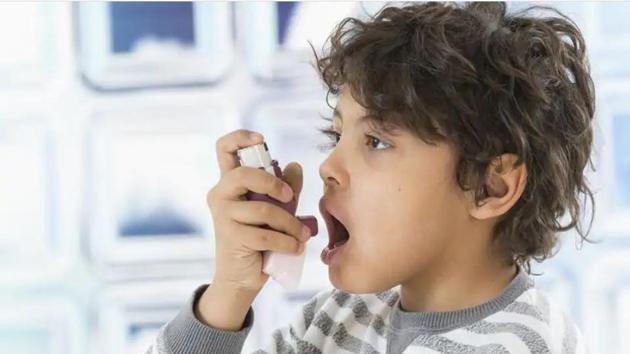Why coughing doesn’t mean that your child may have asthma
Studies from India show that asthma among children who are 13–14 years of age is lower than 6–7 years old. In some children, however, asthma may disappear for some years only to return at a later stage in life.
Coughing and wheezing before the age of six years are signs that the child is having difficulty breathing, but these are not always a sign of asthma. With environmental factors such as pollutants, dust, changing weather, pollen, mites, mould, hazardous volatile compounds and food additives pushing up allergies and asthma cases, every cough and wheeze prompts panicked parents to call paediatricians several times a day.

Paediatricians say more than children, parents need to breathe easy.
Around one in three children under the age of five cough and wheeze when they have colds and other viral infections because infections cause inflammation, which may also make the inner lining of airways to swell up and restrict air flow. Unless the difficulty breathing last for weeks after the cold or fever is over, the child is unlikely to develop asthma.
Signs of asthma
Around half the children outgrow the symptoms by age six, but the rest continue to have airway sensitivity and asthma. Studies from India show that asthma among children who are 13–14 years of age is lower than 6–7 years old. In some children, however, asthma may disappear for some years only to return at a later stage in life.
Children with a personal or family history of asthma, allergies or eczema are at increased risk, as are those who have had frequent infections or are exposed to severe air pollution, which lowers maximal lung functional capacity exacerbates of asthma.
An estimated 10% to 15% children between the ages of 5 and 11 years have asthma in India, which makes asthma the most common chronic disease in children in the country. Between 15 and 20 million people have asthma in India, according to the World Health Organization, with the Indian Journal of Medical Research estimating the number to be at least 30 million. The common symptoms in children include recurrent attacks of dry and hacking cough without fever that get more severe while sleeping or in the early morning hours. Some children may produce a whistling sound while breathing, while a few may complain of chest pain or stomach ache.
Severe attacks rarely occur suddenly, but are known to occur without warning even in children with intermittent asthma, so testing for asthma is a must to start treatment to manage the disease and prevent acute attacks.
Avoiding trouble
A major trigger for children is the narrowing of the airways because of physical exertion. Exercise-induced asthma causes breathlessness, wheezing, and coughing within 5 to 10 minutes of the cool-down period after physical activity, but it may also occur during running or playing sports, such as cricket, football, basketball or athletics. These symptoms usually disappear within 30 minutes of stopping.
Sporting activities such as swimming cause less airway cooling or drying and rarely cause exercise-induced asthma. Sports involving short bursts of activity are better tolerated by children with asthma than prolonged exertion.
Along with using prescription medication to dilate airways and lower their sensitivity to minimise attacks, identifying and avoiding irritants is also essential. Till the specific triggers are not identified, a child with airway sensitivity has to be protected from known allergens like dust and other indoor and outdoor air pollutants, pollen, food colour and additives, secondhand smoke, poorly ventilated spaces homes and cold weather.
Since asthma is a chronic disease, treatment has to continue for life. Even children with mild asthma must have SOS medicines, such as inhaled short-acting beta2-agonists, handy to prevent symptoms from exacerbating. Those with moderate to severe asthma need prescription medicines, such as anti-inflammatory medicines, to lower airway sensitivity and inflammation and prevent asthma attacks.
Catch your daily dose of Fashion, Health, Festivals, Travel, Relationship, Recipe and all the other Latest Lifestyle News on Hindustan Times Website and APPs.




